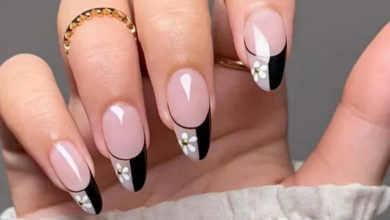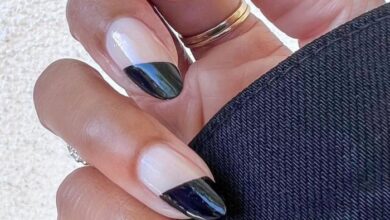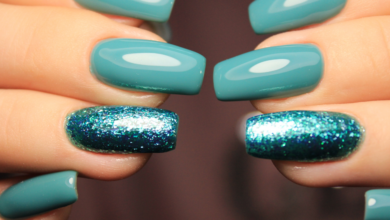
Have you ever stopped to consider that your nails might be trying to tell you something about your overall health? Your nails are more than just a canvas for nail polish – they can often provide valuable insights into your well-being. From changes in color and texture to ridges and grooves, this article will explore the various signs that your nails may be sending about your health. So, next time you look down at your hands, take a moment to listen to what your nails might be saying – it could be a clue to a deeper issue that requires attention.
Nail Anatomy
Nails are more than just a tool for scratching and picking things up. They actually play a significant role in our overall health and well-being. Understanding the anatomy of nails can help us better appreciate their function and importance in our body.
Structure of the Nail
Nails are made up of multiple layers of a protein called keratin. The nail is composed of several parts that work together to form a protective shield for the fingertips. The main parts of the nail include the nail plate, nail bed, cuticle, lunula, and matrix.
The nail plate is the visible part of the nail that covers the nail bed. It is the hard and translucent portion that we typically see and can grow up to a few millimeters beyond the fingertip. The nail bed is the skin underneath the nail plate, and it contains blood vessels that give the nail its pinkish color.
The cuticle, also known as the eponychium, is the thin layer of skin that surrounds the base of the nail plate. Its purpose is to seal the space between the skin and the nail plate, protecting the nail matrix from infection.
The lunula is the whitish, crescent-shaped area visible at the base of the nail. It is the visible part of the nail matrix, which is the area where the nail grows from. The matrix produces new cells that push the nail plate forward, allowing it to grow.
Parts of the Nail
To have a better understanding of the function of nails, it is important to know the different parts that make up the nail. The nail plate, as mentioned earlier, is the hard and flat part that covers the nail bed. It is composed of multiple layers of keratin.
The nail bed is the skin underneath the nail plate, and it provides nourishment to the growing nail. It contains blood vessels that give the nail its pinkish color. This is why a healthy, well-nourished individual tends to have pink nails.
The cuticle, or eponychium, as we mentioned earlier, is the thin layer of skin that surrounds the base of the nail plate. Its function is to protect the nail matrix from infection and damage.
Lastly, the matrix is the area where the nail grows from. It is located at the base of the nail, beneath the cuticle. The matrix produces new cells that push the nail plate forward as they grow, resulting in the visible growth we see.
Function of the Nail
While nails may seem insignificant, they actually serve a vital function in our daily lives. One of their primary roles is to protect our fingertips from injuries and trauma. They act as a barrier and shield, preventing damage to the sensitive tissues underneath.
Nails also assist in fine motor skills, such as picking up small objects or buttoning clothes. They provide us with precision and grip, making it easier to perform tasks that require dexterity.
Furthermore, nails can be a window into our overall health. Changes in nail appearance, such as discoloration or brittle nails, can indicate underlying health issues. By paying attention to the health of our nails, we can potentially catch early signs of diseases or deficiencies.
Understanding the structure and function of nails is essential in maintaining their health and addressing any issues that may arise. Now, let’s delve deeper into what constitutes a normal nail appearance.
Normal Nail Appearance
The appearance of our nails can vary among individuals, but a normal nail usually exhibits certain characteristics. Understanding what constitutes a healthy nail appearance can help us identify any deviations from the norm, which may indicate underlying health conditions.
Color
A healthy nail is typically pink or flesh-toned. The pink color is due to the blood vessels present in the nail bed, which show through the translucent nail plate. Any significant changes in nail color, such as yellowing or discoloration, can be a sign of an underlying issue.
Texture
The texture of a healthy nail is smooth and relatively even. A slight vertical ridge or groove may be normal, but deep or horizontal ridges can be a sign of an underlying problem. If your nails are pitted or have a bumpy texture, it may be worth investigating further.
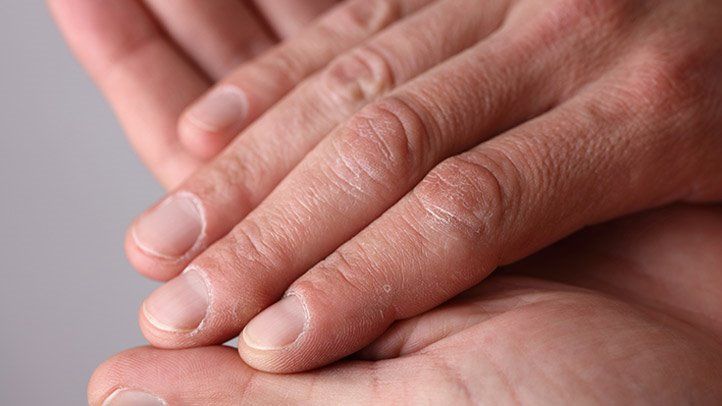
Shape
A healthy nail is usually rounded and follows the natural curve of the fingertip. It should not be excessively flat or curved. Nails that are spoon-shaped or clubbed could be indicative of an underlying condition.
Thickness
The thickness of the nail plate can vary among individuals, but it should generally be consistent and not excessively thick or thin. Changes in nail thickness can be a clue to certain health conditions that may require further evaluation.
Growth Rate
The growth rate of nails can vary depending on factors such as age, genetics, and overall health. On average, nails tend to grow about 2-3 millimeters per month. Consistent and steady growth is a good sign of nail health.
Understanding what constitutes a normal nail appearance is crucial in recognizing any potential problems. Now, let’s delve into the characteristics of healthy nails.
Healthy Nails
Having healthy nails not only contributes to their appearance but also reflects overall well-being. Healthy nails are a result of proper nail care and good overall health. Here are some characteristics of healthy nails to keep in mind.
Pink or Flesh-Toned Color
Healthy nails have a pink or flesh-toned color. The nail plate should be translucent enough to allow the blood vessels in the nail bed to show through. This indicates a good blood supply to the nails, which is essential for their health.
Smooth Texture
Healthy nails are smooth to the touch and free from any significant bumps or ridges. While slight vertical ridges may be normal, deep or horizontal ridges can indicate an underlying issue. It’s important to pay attention to any changes in texture.
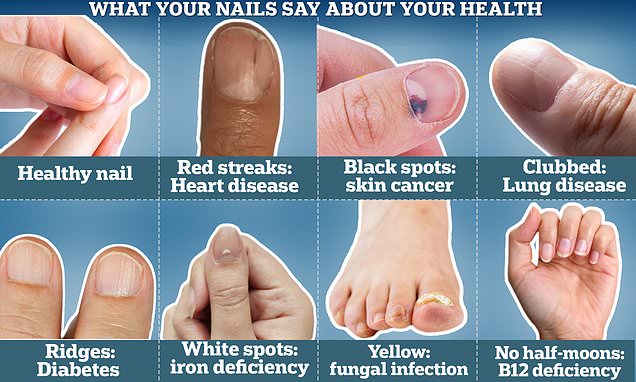
Rounded Shape
A healthy nail typically has a rounded shape that follows the natural curve of the fingertip. Nails that are excessively flat or curved may require further investigation. Maintaining a natural shape helps prevent issues such as ingrown nails.
Consistent Thickness
Healthy nails have a consistent thickness throughout the nail plate. They should not be noticeably thick or thin. Changes in nail thickness can be a sign of certain health conditions and should be evaluated further if noticed.
Steady Growth Rate
Nails grow at an average rate of about 2-3 millimeters per month. This steady growth rate is a sign of healthy nail function. If you notice sudden changes in the growth rate or if your nails are not growing at all, it may be worth seeking medical advice.
Maintaining the health of your nails is not only important for their appearance but also for your overall well-being. Now, let’s explore some common nail problems that can arise and how to address them.
Common Nail Problems
While healthy nails are desirable, many people face various nail problems at some point in their lives. Understanding common nail issues can equip you with the knowledge to identify and address potential problems. Here are some common nail problems you may encounter.
Brittle Nails
Brittle nails are a common problem that many people face. They are characterized by nails that easily chip, peel, or break. This condition is often a result of dryness and lack of moisture in the nails. Frequent exposure to harsh chemicals or excessive use of nail polish can also contribute to brittleness.
Yellow or Discolored Nails
Nails that appear yellowed or discolored can be a sign of an underlying condition. One of the most common causes is a fungal infection, which can lead to discoloration and thickening of the nails. Other factors, such as smoking, certain medications, or using low-quality nail products, can also cause nail discoloration.
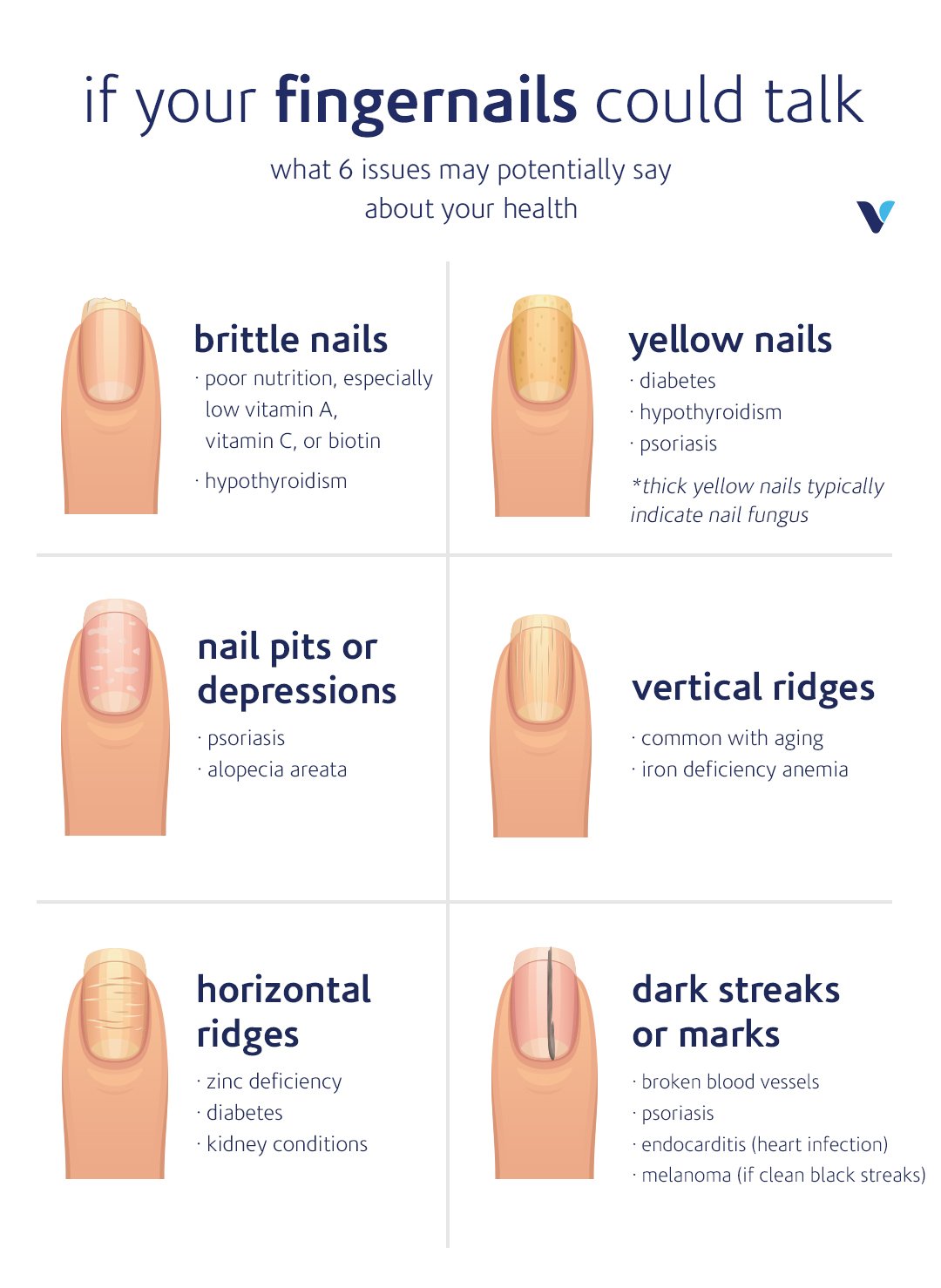
Pitted Nails
Pitted nails are characterized by the presence of small depressions or dents on the nail surface. This can be a sign of various conditions, including psoriasis or eczema. In some cases, it may be a result of a systemic disease such as autoimmune disorders or alopecia areata.
Clubbed Nails
Clubbed nails are nails that appear swollen and rounded at the fingertips. This condition is often associated with respiratory or cardiovascular issues. It can be a sign of low oxygen levels in the blood, possibly due to lung or heart problems.
Spoon-Shaped Nails
Spoon-shaped nails, also known as koilonychia, are nails that have a concave or spoon-like shape. This condition can be hereditary or may be associated with iron deficiency anemia. It is important to determine the underlying cause of koilonychia for proper management.
These are just a few examples of common nail problems. It is essential to address these issues promptly to prevent further complications. In the next section, we will explore the factors that can affect nail health.
Factors Affecting Nail Health
Maintaining healthy nails is not solely dependent on external care. Several factors, both internal and external, can significantly impact your nail health. Understanding these factors can help you adopt habits that promote healthy nails. Here are some of the key factors affecting nail health.
Diet and Nutrition
Proper nutrition is essential for overall health, including the health of your nails. A balanced diet rich in vitamins and minerals, especially biotin, vitamin B12, and iron, can promote nail health. Including foods like eggs, nuts, leafy greens, and lean meats can provide the necessary nutrients for healthy nails.
Hygiene Practices
Maintaining proper nail hygiene is crucial for preventing infections and maintaining nail health. Regularly cleaning your nails, keeping them dry, and avoiding biting or picking at your nails can protect them from damage and infection. Additionally, using clean tools and keeping your nail care products hygienic is vital for preventing contamination.
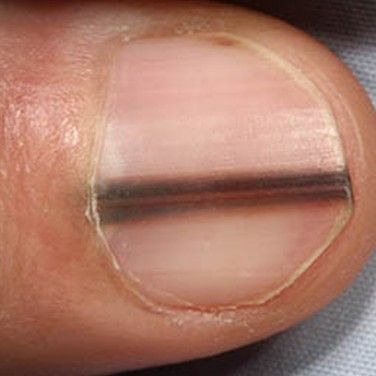
Medical Conditions
Certain medical conditions can have a direct impact on nail health. Disorders such as psoriasis, eczema, and thyroid problems can cause nail changes such as pitting, ridges, or discoloration. It is important to manage these underlying conditions to maintain overall nail health.
Medication
Some medications can affect the appearance and health of your nails. For example, certain antibiotics, chemotherapy drugs, or medications used to treat heart conditions can cause nail discoloration, brittleness, or even nail loss. If you notice any changes in your nails after starting a new medication, it is essential to consult your healthcare provider.
Lifestyle Habits
Certain lifestyle habits can have a detrimental effect on nail health. Excessive use of nail polish, acrylic nails, or harsh nail products can weaken the nails and make them more prone to damage. Additionally, repetitive trauma from activities such as typing or using tools without wearing protective gloves can impact nail health.
Understanding these factors can help you make informed choices and adopt habits that promote nail health. The condition of your nails can be a reflection of your overall well-being. In the next section, let’s explore how nails can reflect your health.
How Nails Reflect Health
Nails can offer valuable insights into your overall health and well-being. Changes in nail appearance, texture, or growth rate can indicate underlying medical conditions or nutritional deficiencies. Here are some indications of different health conditions that can be reflected in your nails.
Indications of Nutritional Deficiencies
Nutritional deficiencies can manifest through changes in your nails. For example, iron deficiency anemia can cause nails to become brittle or spoon-shaped. Biotin deficiency can lead to weak and thin nails. Paying attention to these changes can prompt you to address any possible underlying nutritional deficiencies.
Signs of Systemic Diseases
Certain systemic diseases can cause changes in nail appearance. For instance, liver disease can lead to pale or white nails. Kidney disease may cause yellowish nails. Diabetes can cause thickening of the nails and an increased risk of fungal infections. Recognizing these changes can help in detecting and managing these conditions early on.
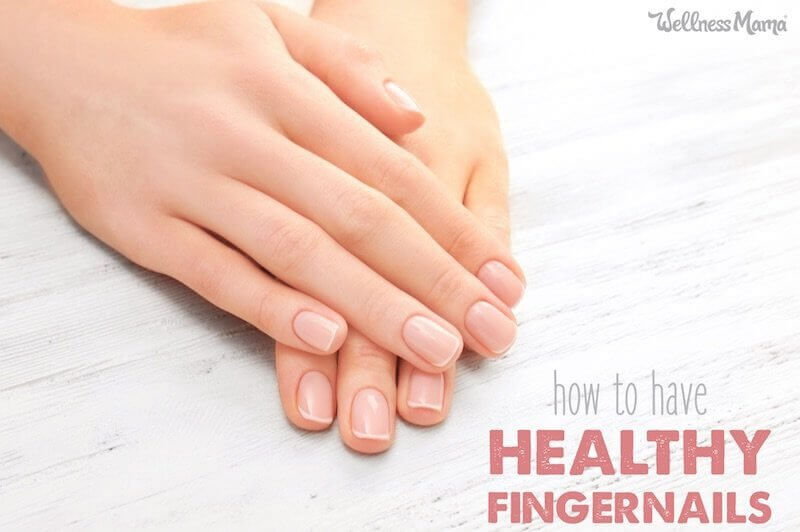
Effects of Infection and Inflammation
Nail infections and inflammation can significantly affect nail appearance. Fungal or bacterial infections can cause nails to become discolored, thickened, or develop a foul odor. Psoriasis, an autoimmune inflammatory condition, can lead to pitting, ridges, or even separation of the nail plate. It is important to seek appropriate treatment for these conditions to prevent complications.
Clues to Metabolic Disorders
Metabolic disorders, such as thyroid problems or diabetes, can result in changes in nail health. Hypothyroidism, for example, can cause brittle and dry nails. Diabetes can lead to various diabetic nail changes, including thickening, yellowing, or fungal infections. Monitoring your nails can provide clues to these underlying metabolic disorders.
Implications of Chronic Diseases
Chronic diseases can impact nail health over time. For instance, lung diseases can cause clubbing of the nails due to decreased oxygen levels. Rheumatoid arthritis can cause inflammation of the nail bed, leading to nail deformities. By observing these changes, you can seek appropriate medical care to manage chronic conditions effectively.
Remember that changes in nail appearance may not always indicate serious health issues, but it is always important to pay attention to any noticeable changes. Regularly monitoring your nails and seeking medical advice if you are concerned can help in identifying and managing any underlying health issues. In the next section, we will discuss measures to maintain nail health.
Maintaining Nail Health
Taking care of your nails goes beyond aesthetics – it is an essential part of maintaining overall health. By following some simple practices, you can promote healthy nails and minimize the risk of nail problems. Here are some tips to help you maintain nail health.
Keep Nails Clean and Dry
Regularly clean your nails with mild soap and warm water to remove dirt and bacteria. It is important to dry your nails thoroughly after washing, as moisture can promote fungal growth. Avoid keeping your nails wet for prolonged periods, as this can weaken the structure of the nail.
Avoid Excessive Use of Nail Polish and Acrylics
While nail polish and acrylic nails can enhance the appearance of your nails, excessive use can weaken them. Allow your nails to breathe by going polish-free for a few days between applications. When using nail polish, opt for high-quality products that are free from harsh chemicals that can cause damage.
Protect Nails from Harsh Chemicals
When engaging in household chores or using cleaning products, it is essential to protect your nails. Wear gloves to shield your nails from harsh chemicals that can strip them of moisture and weaken them. This precaution can help prevent damage and brittleness.
Moisturize and Hydrate Nails
Just like your skin, your nails also benefit from regular moisturization. Apply moisturizing lotion or cuticle oil to keep your nails and cuticles hydrated. This can help prevent dryness and maintain nail flexibility. However, avoid excessive use of moisturizers, as too much moisture can also weaken the nails.
Trim and File Nails Properly
Proper nail trimming and filing can help prevent ingrown nails and nail damage. Trim your nails regularly, keeping them at a length that is comfortable for you. Use a gentle file to shape the edges of your nails, ensuring a smooth finish. Avoid using overly abrasive files that can cause nail thinning or splitting.
By incorporating these practices into your nail care routine, you can promote healthy nails and reduce the risk of common nail problems. However, there are instances when it is necessary to consult a doctor. Let’s discuss when it is appropriate to seek medical advice for your nails.
When to Consult a Doctor
While maintaining regular nail care can prevent many common nail problems, there are situations when it is necessary to consult a doctor. Here are some instances when seeking medical advice for your nails is recommended.
Persistent Changes in Nail Appearance
If you notice persistent changes in the appearance of your nails, such as discoloration, thickening, or deformities that do not resolve after proper care, it is advisable to consult a doctor. These changes may be indicative of underlying conditions that require proper diagnosis and treatment.
Severe Nail Infections
If you develop severe nail infections that do not respond to at-home remedies or over-the-counter treatments, it is essential to seek medical attention. An infection can cause pain, swelling, and pus formation in the nails. Prompt treatment is necessary to prevent further complications.
Painful Nail Problems
If you experience pain or discomfort in your nails, it is important to have them evaluated by a healthcare professional. Painful conditions such as ingrown nails or nail injuries should be addressed promptly to prevent worsening and potential infections.
Nails Indicating Underlying Health Issues
If your nails exhibit significant changes, such as sudden discoloration, separation from the nail bed, or unusual growth patterns, it is crucial to consult a doctor. These changes may be indicative of underlying health issues that require proper evaluation and management.
Remember that timely intervention and medical advice can help in identifying and managing any potential nail problems or underlying health conditions. Now let’s discuss some general tips for taking care of your nails.
Taking Care of Your Nails
In addition to seeking medical advice when needed, there are simple yet effective ways to take care of your nails on a day-to-day basis. By adopting these practices, you can promote nail health and well-being. Here are some tips for taking care of your nails.
Regularly Check Nail Condition
Take the time to examine your nails regularly. Look for any changes in color, texture, or shape. By being proactive and identifying any potential issues early on, you can seek appropriate care and prevent further complications.
Maintain a Healthy Diet
A well-balanced diet rich in vitamins, minerals, and protein is essential for overall health, including nail health. Prioritize foods that are beneficial for nails, such as eggs, lean meats, nuts, and leafy greens. Proper nutrition can help promote strong and healthy nails.
Practice Good Hygiene
Maintaining good hygiene practices is vital for nail health. Keep your nails clean and dry, and avoid biting or picking at them, as this can introduce bacteria and lead to infections. Use clean tools for manicures and pedicures, and regularly replace any worn-out nail care items, such as emery boards or nail brushes.
Protect Nails from Trauma
Take precautions to protect your nails from trauma or injury. Wear protective gloves when engaging in activities that may strain or damage your nails, such as gardening or household chores. Avoid using your nails as tools, as this can lead to breakage or damage.
Seek Professional Help When Needed
If you notice any persistent issues with your nails or experience pain or discomfort, do not hesitate to seek professional help. A dermatologist or a healthcare provider specializing in nail care can offer valuable insights and recommend appropriate treatments or further investigations if required.
By incorporating these practices into your daily routine, you can maintain healthy nails and contribute to your overall well-being. Remember, your nails are not just for aesthetics, but they can also serve as indicators of your health. Now, let’s wrap up everything we have discussed.
Conclusion
In conclusion, understanding the anatomy of nails and their function is essential in recognizing the significance of nail health. Healthy nails should have a pink or flesh-toned color, smooth texture, rounded shape, consistent thickness, and steady growth rate. However, common nail problems such as brittle nails, yellow or discolored nails, pitted nails, clubbed nails, and spoon-shaped nails can arise.
Factors affecting nail health include diet and nutrition, hygiene practices, medical conditions, medication, and lifestyle habits. Nails can reflect health conditions, nutritional deficiencies, systemic diseases, infections, inflammation, metabolic disorders, and chronic diseases. Maintaining nail health involves keeping nails clean and dry, avoiding excessive use of nail polish and acrylics, protecting nails from harsh chemicals, moisturizing and hydrating nails, and trimming and filing nails properly.
It is important to consult a doctor in case of persistent changes in nail appearance, severe nail infections, painful nail problems, or nails indicating underlying health issues. Taking care of nails includes regularly checking nail condition, maintaining a healthy diet, practicing good hygiene, protecting nails from trauma, and seeking professional help when needed.
By understanding and taking care of your nails, you can contribute to your overall health and well-being. Remember to pay attention to any changes in your nails and seek appropriate medical advice when necessary. Your nails are not just a fashion statement, but they can also act as a window into your health.
Beyond The Polish: Understanding Nail Health With Stylish.ae(Opens in a new browser tab)
Nail The Basics: Starting Your Nail Care Journey With Stylish.ae(Opens in a new browser tab)
Matte Vs Gloss: Stylish.ae Weighs In On The Best Nail Finishes(Opens in a new browser tab)

